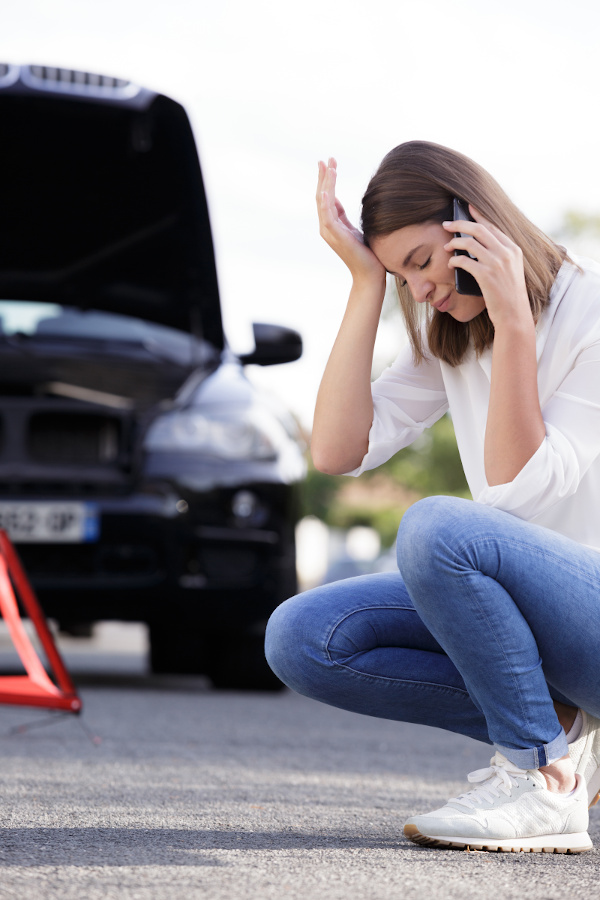Gap Insurance: Where to Find It on Your Paperwork

Gap insurance, often referred to simply as "GAP" insurance, is an auto insurance coverage option that plays a critical role in financial protection. But where exactly can you find this coverage on your insurance paperwork? Understanding where to look is key for policyholders to ensure they have the coverage they expect. Let's delve into the details of locating gap insurance on your policy documents.
Understanding Gap Insurance

GAP insurance covers the “gap” between the actual cash value (ACV) of your vehicle and the balance still owed on your auto loan or lease if your car is totaled or stolen. Here’s a brief overview of why you might need it:
- New Car Depreciation: Vehicles depreciate rapidly, especially in the first few years.
- Loan Balance: The remaining balance on your auto loan can exceed the value of your car, particularly in a total loss scenario.
- Financial Protection: Gap insurance protects against out-of-pocket expenses due to the difference between what you owe and what your insurance pays out.

Where to Find Gap Insurance on Your Paperwork

To locate gap insurance within your insurance documents, you’ll need to look in several key areas:
Policy Declaration Page

The Policy Declaration page, often found at the beginning of your policy documentation, gives a summary of your coverage:
- List of Coverages: Gap insurance might be listed under “Additional Coverages” or “Optional Coverages.”
- Premium Section: Check the premiums and see if there is an additional fee associated with gap insurance.
Endorsements or Riders

Endorsements are addendums to your insurance policy that outline additional coverage options:
- Look for a section that mentions “Loan/Lease Payoff Coverage” or similar.
- This might be found under a heading like “Endorsements” or “Additional Coverages.”
Policy Jacket

The policy jacket is typically at the back of your policy and contains detailed explanations of your coverage:
- Search for terms like “GAP” or “Guaranteed Auto Protection” in the index or glossary.
- Check for sections on “Additional Coverages” or “Special Conditions.”
Invoice or Receipt

If you’ve purchased gap insurance through your insurance agent or provider, it should show up on your invoice or receipt:
- The description might say something like “Loan/Lease Payoff Coverage” or “Gap Insurance.”
- Look for any additional fees or charges specifically related to gap insurance.
Lease or Loan Agreement

If you financed your vehicle, your lender or lessor might require gap insurance:
- Review any addendums or additional documents related to your loan or lease.
- Look for mentions of gap insurance or similar terms.
Other Documentation

Here are other documents where you might find gap insurance listed:
- Welcome Letters or Policy Renewals: These documents might recap your coverages.
- Proof of Insurance Cards: They sometimes have brief notes about coverages.
Understanding Coverage Limits and Terms

Once you’ve found the gap insurance coverage, understanding the details is essential:
- Coverage Limits: How much will be paid out in the event of a total loss?
- Eligibility: Are there any restrictions on when the coverage applies?
- Duration: Does the policy last as long as your loan or lease?
- Premium: How much does the gap insurance cost over time?
💡 Note: It's worth asking your insurance agent or provider for a detailed explanation if you're unsure about any aspect of your coverage.
| Document | Where to Look | What to Look For |
|---|---|---|
| Policy Declaration Page | List of Coverages | "Additional Coverages" or "Optional Coverages" |
| Endorsements | Loan/Lease Payoff Coverage | Endorsement details |
| Policy Jacket | Index or Glossary | GAP, Guaranteed Auto Protection |
| Invoice or Receipt | Additional Charges | Gap Insurance fees |
| Lease or Loan Agreement | Addendums | Gap Insurance mention |

By carefully examining your insurance documents, you can ensure you understand the intricacies of your gap insurance coverage. This knowledge can prove invaluable, particularly in the unfortunate event of a total loss or theft. Always remember that thorough comprehension of your policy is fundamental to getting the most out of your insurance protection.
What does gap insurance cover?

+
Gap insurance covers the difference between what your insurance pays out for your totaled or stolen vehicle and the amount you still owe on your car loan or lease.
Is gap insurance worth it?

+
Gap insurance can be very beneficial if you owe more on your vehicle than its current market value. It’s particularly useful for new cars that depreciate quickly or if you made a small down payment.
Can I add gap insurance at any time?

+
Most insurance companies allow gap insurance to be added to your policy within the first year or when you finance a new vehicle, but always check with your provider for specific terms and conditions.